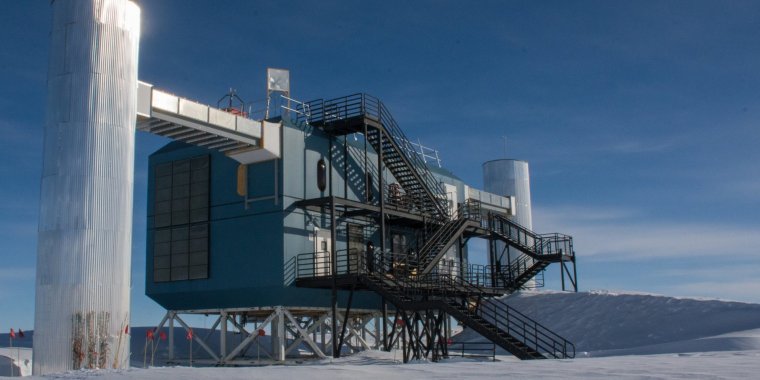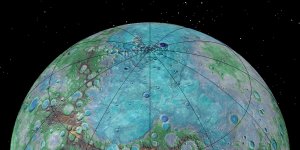| News / Science News |
Antarctic detector offers first look at how Earth stops high-energy neutrinos in their tracks
An interdisciplinary team of researchers using the IceCube Neutrino Observatory in Antarctica has measured how certain high-energy neutrinos are absorbed by the Earth, as opposed to passing through matter as most neutrinos do. The finding could help expand scientists' understanding of the fundamental forces of the universe.

The IceCube Neutrino Observatory at NSF's Amundsen-Scott South Pole Station. Image credit: Mike Lucibella, Antarctic Sun
Neutrinos are subatomic particles, most of which pass through anything and everything, only very rarely interacting with matter. In contrast to the newly discovered properties of the high-energy neutrinos, about 100 trillion neutrinos with lower energies pass through the human body, on average, every second without being absorbed.
IceCube is an array of 5,160 optical sensors, each roughly two feet in diameter, deeply encased within a cubic kilometer of very clear Antarctic ice near NSF's Amundsen-Scott South Pole Station. IceCube's sensors do not directly observe neutrinos. Instead, they measure flashes of blue light, known as Cherenkov radiation, produced by muons and other fast-moving charged particles created when neutrinos interact with the ice.
By measuring the light patterns from these interactions in or near the detector array, IceCube can estimate the neutrinos' directions and energies.
The IceCube Collaboration research team found that fewer energetic neutrinos made it to IceCube's detector on paths that took them all the way through the Earth than from less obstructed paths, including near-horizontal trajectories.
The probability of neutrinos being absorbed by the Earth was consistent with expectations from the Standard Model of particle physics, a theory that scientists use to explain the fundamental forces and particles in the universe.
This probability -- that neutrinos of a given energy will interact with matter -- is what physicists refer to as a "cross section."
This study provides the first cross-section measurements for a neutrino energy range that is up to 1,000 times higher than previous measurements at particle accelerators.
Most of the neutrinos studied by the research team were more than a million times more energetic than the those produced by sources like the sun or nuclear power plants.
The neutrino-interaction events selected for the study have energies of at least one trillion electron volts, or 1 teraelectronvolt (TeV), roughly the energy of motion of a flying mosquito.
At this energy, the Earth's absorption of neutrinos is relatively small; the lowest-energy neutrinos in the study largely served as a baseline measurement for neutrinos that the Earth did not absorb. (National Science Foundation)
YOU MAY ALSO LIKE




